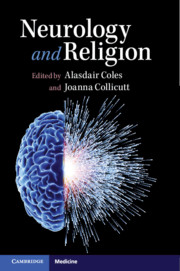Book contents
- Neurology and Religion
- Neurology and Religion
- Copyright page
- Contents
- Contributors
- Preface
- Part I The Neurological Study of Religion
- I.I The Natures of Neurology and Religion
- Chapter 1 The Discipline of Neurology
- Chapter 2 The Scientific Study of Religion
- Chapter 3 Methodological Hazards in the Neuroscientific Study of Religion
- I.II Philosophical and Historical Issues
- Part II Neurology and Religion
- Bibliography
- Index
- References
Chapter 3 - Methodological Hazards in the Neuroscientific Study of Religion
from I.I - The Natures of Neurology and Religion
Published online by Cambridge University Press: 28 October 2019
- Neurology and Religion
- Neurology and Religion
- Copyright page
- Contents
- Contributors
- Preface
- Part I The Neurological Study of Religion
- I.I The Natures of Neurology and Religion
- Chapter 1 The Discipline of Neurology
- Chapter 2 The Scientific Study of Religion
- Chapter 3 Methodological Hazards in the Neuroscientific Study of Religion
- I.II Philosophical and Historical Issues
- Part II Neurology and Religion
- Bibliography
- Index
- References
Summary
The purpose of this chapter is to survey the various approaches and methods that have been employed in the attempt to study the extent to which religious beliefs, practices and experiences are associated with activity in different parts and pathways of the human brain. This includes not only the neurology of religion in the sense of how damage to the brain affects aspects of religious practice and belief, but also studies of neurotypical subjects. My aim has been to cover the full range of modern studies. For good measure I have mentioned some techniques that although not so far used for this purpose, could be used in future.
- Type
- Chapter
- Information
- Neurology and Religion , pp. 12 - 24Publisher: Cambridge University PressPrint publication year: 2019



